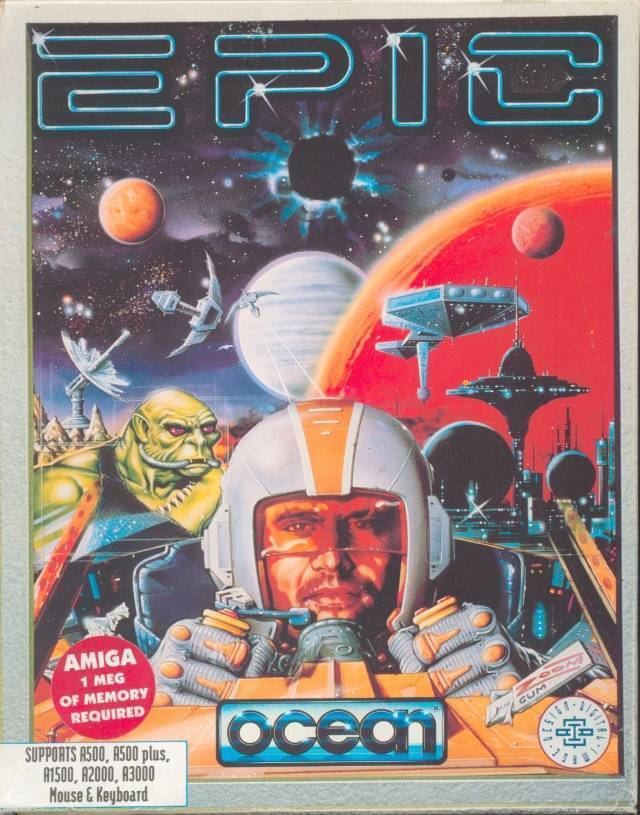Engine Retaliator | Release date(s) INT: 1992 Initial release date 1992 | |
 | ||
Artist(s) Martin KenwrightPaul Hollywood Composer(s) Øisten EideDavid Whittaker Genre Space flight simulation game Similar Digital Image Design games, Shoot 'em up games | ||
Epic is an action-based space flight simulator game developed by Digital Image Design and published by Ocean Software for the Amiga and Atari ST in early 1992, with ports for the PC DOS and NEC PC-9801 later the same year. A sequel titled Inferno was released for the PC CD-ROM in 1994.
Contents
Story
The plot borrowed heavily from the television series Battlestar Galactica, Star Trek and the Star Wars film franchise, focusing on a fleet of ships carrying the human inhabitants of a planet threatened by an imminent supernova. The escape route leads through the Rexxon Empire's territory, which results in war. The player controls the fleet's only hope, one of three experimental Epic class fighters. In the final mission, the fighter is also used to deploy a cobalt bomb.
Gameplay
Epic has eight completely different levels (including two in two phases), which take place either in space or over the surface of a planet, each with a tight time limit to complete the mission (destroying the assigned targets), with failure being not an option.
Development
The game had been in development for about three years and had been repeatedly delayed. At first it was known under the working title Goldrunner 3D and was initially announced to be published by Microdeal as a spiritual sequel to the two Uridium-like Goldrunner top-down shooting games, before a deal for publishing DID games was signed with Ocean in 1989.
Much of the technology that was used to create F29 Retaliator had been used to create Epic. The action is viewed in 3D, with graphics being a mix of uniformly-colored polygons and bitmaps (featuring 16 colors for Atari-ST and 32 colors in the Amiga version, largely shades of grey). The music featured in the game is from the "Mars Suite" and the "Jupiter Suite" from The Planets by Gustav Holst.
Reception
ACE gave the Amiga and ST versions a score of 839 (out of a possible 1000), praising its fast 3D graphics and sense of scale, but disliking its longevity and lack of depth. While other computer magazines gave Epic a glowing review, Amiga Power criticized the game for its poor design depth and playability; a war of words was exchanged between Amiga Power and Ocean over the review.
Epic Extra Missions
On August 1992, an expansion pack Epic Extra Missions was published on coverdisk for the issue 47 of The One. It was available only for the Amiga and was never sold separately.
